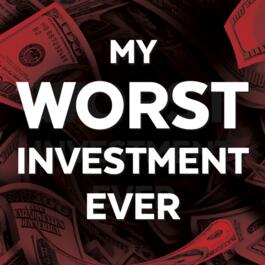
Enrich Your Future 26: Should You Invest Now or Spread It Out?
In this episode of Enrich Your Future, Andrew and Larry Swedroe discuss Larry’s new book, Enrich Your Future: The Keys to Successful Investing. In this series, they discuss Chapter 26: Dollar Cost Averaging. LEARNING: Invest all your money whenever you have it. “If you want to put the odds in your favor, which is the best we can do because we don’t have clear crystal balls, you should put all your money in whenever you have it to invest.”Larry Swedroe In this episode of Enrich Your Future, Andrew and Larry Swedroe discuss Larry’s new book, Enrich Your Future: The Keys to Successful Investing. The book is a collection of stories that Larry has developed over 30 years as the head of financial and economic research at Buckingham Wealth Partners to help investors. You can learn more about Larry’s Worst Investment Ever story on Ep645: Beware of Idiosyncratic Risks. Larry deeply understands the world of academic research and investing, especially risk. Today, Andrew and Larry discuss Chapter 26: Dollar Cost Averaging.Chapter 26: Dollar Cost Averaging In this chapter, Larry discusses why lump sum investing is better than dollar cost averaging.Should you invest your money all at once or spread it over time? According to Larry, the issue of Dollar Cost Averaging (DCA) typically arises when an investor receives a large lump sum of money and wonders if they should invest it all at once or spread it over time. The same problem arises when an investor panics and sells when confronted with a bear market, but then there are two questions: How does the investor decide when it is safe to reenter the market? And does she reinvest all at once or by DCA? Constantinides, a University of Chicago professor in the 1960s, studied this question. He demonstrated that DCA is an inferior strategy to lump sum investing. He termed it logically dumb as it makes no sense based on an expected return outcome. From a purely financial perspective, the logical answer is that if you have money to invest, you should always invest it whenever it’s available. Another paper by John Knight and Lewis Mandell compared DCA to a buy-and-hold strategy. Then, it analyzed the strategies across a series of investor profiles from risk-averse to aggressive. They concluded that DCA had no advantage over the two alternative investment strategies. Combined with their graphical analysis, their numerical trial and empirical evidence favored optimal rebalancing and buy-and-hold strategy over dollar cost averaging. Optimal rebalancing refers to the strategy of adjusting the proportions of assets in a portfolio to maintain a desired level of risk and return.Dollar cost averaging versus lump sum investing Knight and Mandell conducted a backtest to compare the performance of DCA versus LSI (lump sum investing). Backtesting is a simulation technique to evaluate the performance of a trading strategy using historical data. They backtested the two strategies between 1926 and 2010. Transaction costs were ignored (favoring DCA, which involves more trading). The authors assumed the initial portfolio was $1 million in cash, and the...
From "My Worst Investment Ever Podcast"


Comments
Add comment Feedback